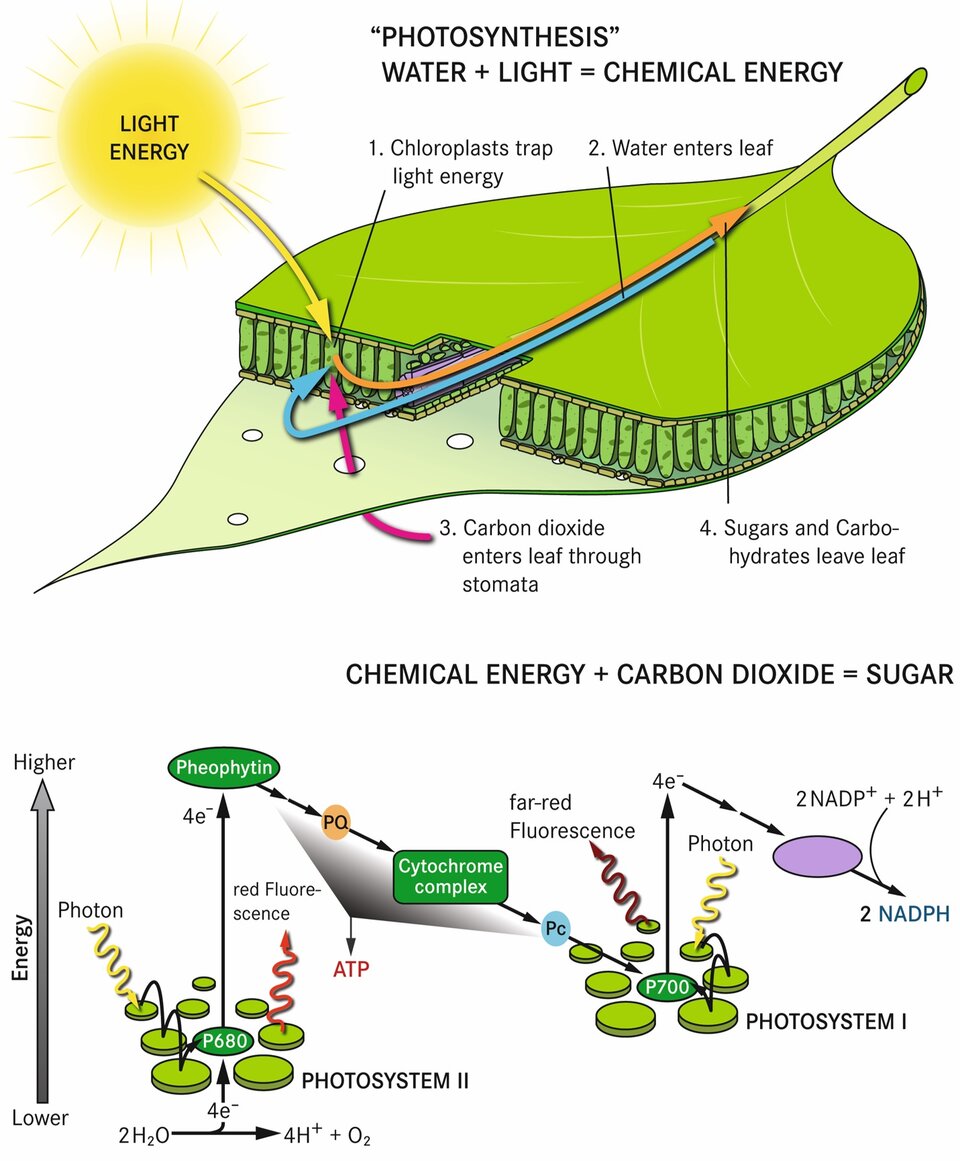Photosynthesis
The conversion of atmospheric carbon dioxide and sunlight into energy-rich carbohydrates through photosynthesis is one of the most important processes on Earth – and one upon which we all depend. Photosynthesis is the fundamental mechanism underlying plant growth and productivity and, thus, energy and mass exchange.
Because plant growth and productivity require the availability of nutrients and water, in addition to adequate sunlight and warmth, variations in these conditions affect photosynthetic rates and are, therefore, reflected as changes in plant productivity.
Although most people have heard of photosynthesis, many may not realise that the process involves an extremely complex chain of events. Photosynthesis continues to be the subject of a vast body of research, for which ten Nobel prizes have been awarded since 1915 to researchers unraveling its complexity in the past decades.
In many respects, the environments in which plants grow are dynamic. Light can fluctuate both in intensity and spectral qualities. Temperatures can plummet, which slows enzymatic reactions; and excessive heat can induce denaturation of enzymes and other proteins. Water deficits can trigger the closure of leaf pores (stomata), thus limiting the flow of carbon dioxide to the carbon-fixing substrates and enzymes. Ozone and other toxic substances can directly and selectively impair components involved in photosynthetic reactions.

Most green plants carry out the process of photosynthesis whereby atmospheric carbon dioxide is converted into energy-rich carbohydrates such as sugars and soluble carbohydrates, which then can be turned into the whole array of plant products ranging from the fragrance of a flower to the massive wooden stems of trees. The process occurs mainly in leaves and needles.
The process uses energy from sunlight, which is absorbed by the plant’s photosynthetic pigments – chlorophyll and carotenoids. Within the membranes of the chloroplasts, a complex cascade of biophysical and biochemical reactions are connected in series and are operated by two photosystems (Photosystem II and I), which work in concert to yield sufficient energy potential to drive the splitting of water molecules and linear electron transport.
Ultimately, this ‘light reaction’ provides sufficient energy to produce two biochemical products, the biochemical reductant Nicotinamide Adenine Dinucleotide Phosphate (NADPH) and the biochemical energy carrier Adenosine Triphosphate (ATP). In the carbon fixation reactions ATP and NADPH are used to produce sugars. This set of chemical reactions is called the Benson-Calvin-Cycle.
Measurements of plant photosynthesis would be of value not only to the scientific community researching the carbon cycle, but also to managers of agricultural and forest resources. While photosynthesis cannot be measured directly from space, this process also involves the emission of a faint fluorescent signal from plants that is subject to environmental conditions and vegetation health – and this signal can be measured from space.
Back to FLEX homepage |






